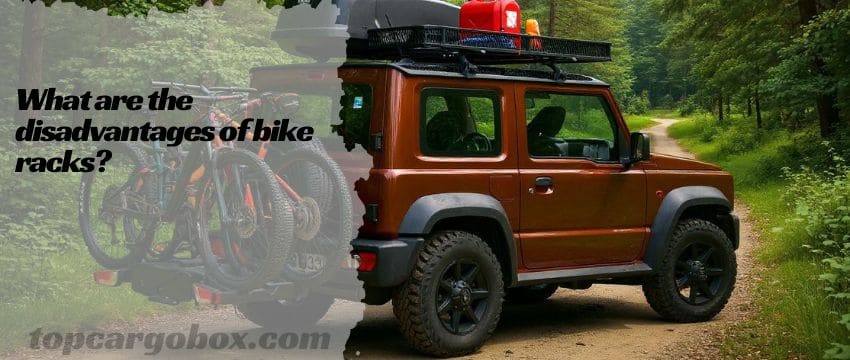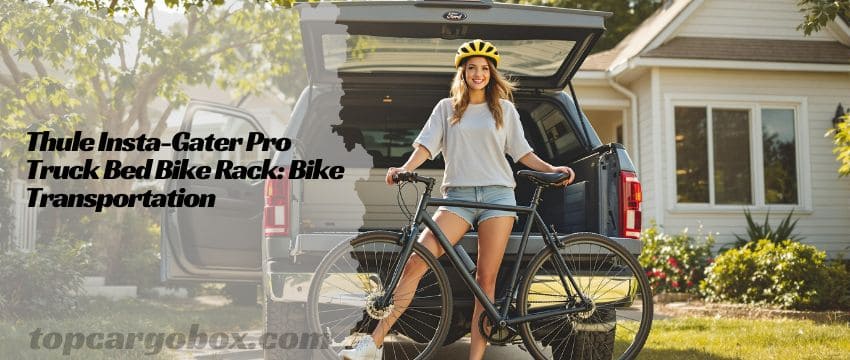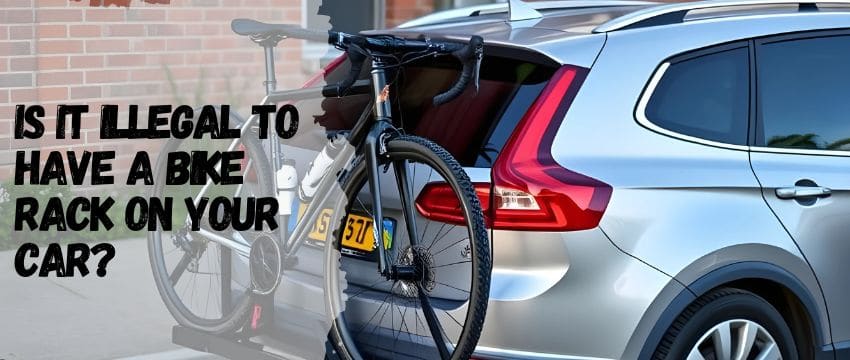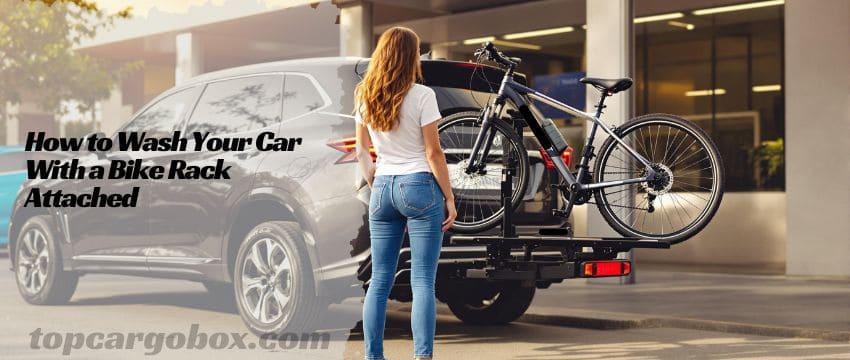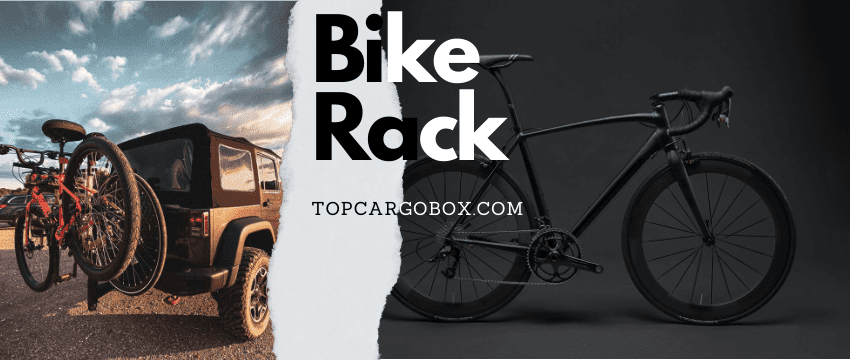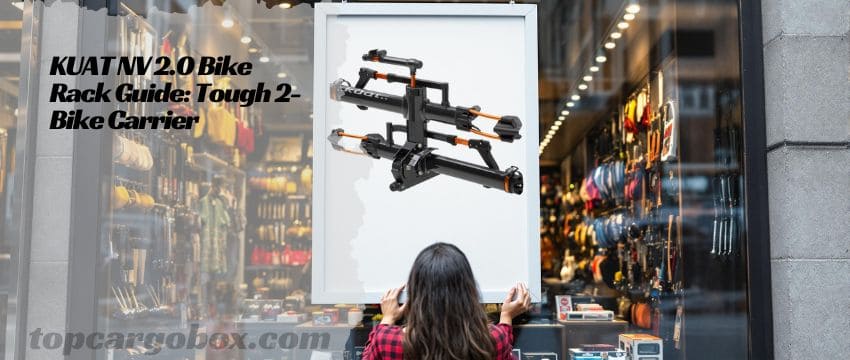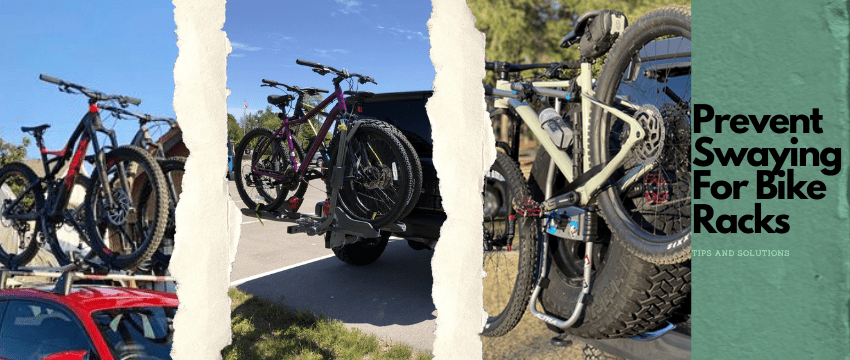Congratulations on the new bike. That’s seriously awesome. Now you’re probably staring at that beautiful machine and wondering how you’re supposed to get it to those amazing trails across town. Your first thought, like most of us, was probably to just grab a bike rack. I mean, it seems like the easiest fix, right? But what if that simple solution turns into a massive headache, the kind that leaves a nasty scratch on your car’s paint or worse, sends your new pride and joy tumbling onto the highway? For real, it happens more than you’d think, and those shiny product photos never show you that side of the story.
Let’s be honest, you just want to ride without a bunch of extra drama. You didn’t sign up for a side hustle in mechanical engineering or stress management just to transport your bike. It’s frustrating to think that the very thing that’s supposed to enable your adventure could actually ruin it before you even start. What if a poorly designed clamp puts too much pressure on your carbon frame? Or a flimsy lock invites trouble in a crowded parking lot? These aren’t just paranoid thoughts; they’re real risks that come with the territory, and it’s enough to make anyone second-guess the whole idea.
We’re going to unpack all of that stuff the marketing glosses over, from the hidden installation grunt work to the legit scary moments on the road. This isn’t about scaring you off but about making sure you know exactly what you’re getting into, so you can actually enjoy the ride. Getting the full picture now, even the annoying parts, will save you so much hassle and protect your gear in the long run. Trust me, a little bit of knowledge here goes a long way.
The Hidden Costs and Hassles of Bike Racks
Okay, let’s talk about the elephant in the room right off the bat: the hit to your wallet and your patience. When you first look at bike racks, the price tag on, say, a basic trunk rack might seem totally reasonable. You think, “Sweet, I can get my bike to the mountains for less than a hundred bucks!” But hold up. That’s just the initial purchase price. The real costs, both financial and mental, start stacking up after you click “add to cart.”
First, there’s the installation grunt work. Off the top of my head, I can remember the first time I tried to install a hitch rack. I figured, “How hard can it be?” Dude, it was a two-hour ordeal of wrestling with bolts, trying to decipher hieroglyphic instructions, and scraping my knuckles. And trunk racks? Forget it. They seem simple, but getting all the straps perfectly tight and balanced so the rack doesn’t sway like a pendulum is a dark art. Then, you finally get it on, and you realize you can’t access your trunk anymore without undoing half the setup. What’s the point of packing a cooler with snacks if you can’t get to them? It’s a total bummer. And if you think a roof rack is the answer, you’ll need to factor in the cost of crossbars first, which can easily double your investment. Suddenly, that “cheap” solution isn’t looking so budget-friendly.
Main Feature / Specification | Details to Consider |
|---|---|
Initial Purchase Price | Ranges from $50 for basic trunk models to over $1000 for high-end, multi-bike hitch systems. |
Added Installation Costs | May require professional hitch installation ($200 – $500), purchase of crossbars for roof systems, or specialty tools. |
Impact on Fuel Economy | Can cause a 5% to 25% decrease in MPG due to aerodynamic drag, especially roof-mounted models. |
Weight Capacity | Varies greatly; always check your vehicle’s hitch rating or roof load limit first to avoid damage. |
Security Level | Most require additional, sold-separately heavy-duty locks to deter theft of both bikes and the rack itself. |
Ease of Access | Trunk racks block rear hatch access; some hitch racks tilt away, but it’s an extra step and feature. |
And we haven’t even gotten to the ongoing costs. That rack sitting on your car is basically a giant parachute. It murders your fuel efficiency. I’m talking a legit 5% to 25% drop in your miles per gallon, which adds up crazy fast on a long road trip. Roof racks are the worst offenders for this. Then there’s security. The little cable lock that comes with most racks? You might as well use a piece of string. It’s purely a placebo. To actually secure your expensive bike, you need to invest in a serious, burly chain or U-lock, which is another $50 to $150 out of pocket. So, when you add it all up—the rack, the potential professional installation, the lost gas money, and the real locks—you’re looking at a significant investment that goes way beyond the sticker price.
Your Car’s Bodywork is in the Line of Fire
Let’s be real for a second. You love your car, or at the very least, you’d like to keep it from looking like it lost a fight with a weed whacker. This is perhaps the most common and heartbreaking disadvantage of bike racks, especially trunk and hitch-mounted styles. They might be carrying your prized possession, but they have absolutely no regard for the vehicle they’re attached to.
Think about how a trunk rack works. It’s a metal frame that presses and rubs directly against your paint, secured by straps and hooks that contact the edges of your trunk lid and bumper. Even with the included felt pads—which are about as protective as a tissue paper shield—dirt and grit will inevitably get trapped between the pad and your paint. Then, every time you go over a bump or the rack shifts slightly, it acts like fine-grit sandpaper, slowly grinding away your clear coat. I’ve seen cars with permanent, ghostly outlines of where a bike rack once was, a perfect negative image etched into the paint. It sucks. And those hooks? They can easily chip the paint on the edges of your panels if you’re not insanely careful during installation and removal.
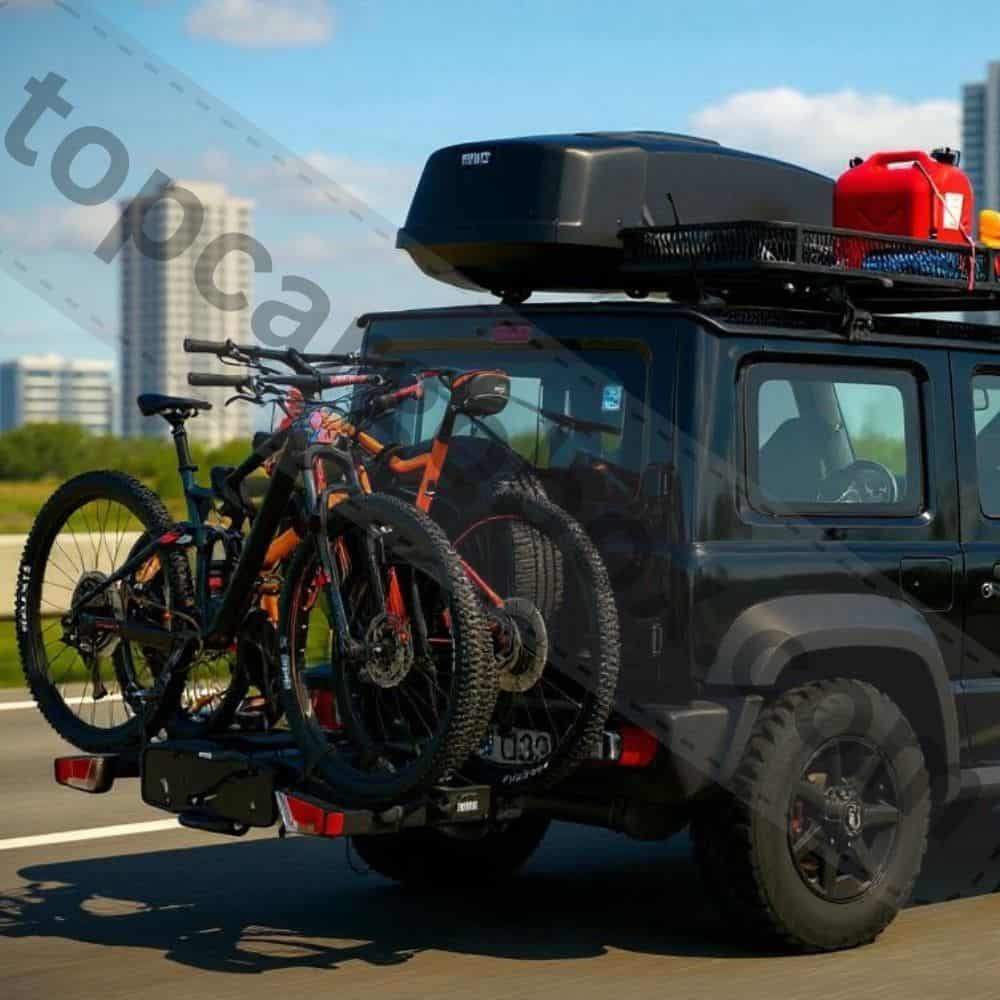
Hitch racks seem safer, right? They don’t touch the body! Well, not exactly. The bikes themselves are the danger. If you’re not hyper-vigilant when loading and unloading, a pedal, a greasy chain, or the handlebar can easily swing around and smack your rear quarter panel or tailgate. One tiny lapse in concentration and—oh snap!—there’s a new scratch or dent to remember your trip by. And if you have a hitch rack that wobbles even a little bit (and most do), that constant, slight movement can wear away the paint on the inside of your hitch receiver over time, leading to rust and a stuck rack. It’s a constant, low-grade anxiety, wondering if your convenience is costing you a four-figure paint job down the line.
The Constant Anxiety of Theft and Security
You just dropped a couple thousand on a carbon fiber wonder bike. You load it lovingly onto your rack, use the dinky little lock that came with it, and run into the coffee shop for a quick latte. Ten minutes later, you come out and… wait, where’s my bike? Your stomach drops. You’ve just become another statistic, another victim of bike rack theft. This isn’t some rare, worst-case scenario; it happens every single day because most bike racks offer about as much security as a screen door on a submarine.
The truth is, the vast majority of racks are shockingly easy to compromise. The cable locks included are a joke; any thief with a pair of $10 cable cutters can snip through them in under a second. Seriously, it’s not even a challenge. But it gets worse. Many racks themselves are attached to your car with laughably simple mechanisms. A common style of hitch rack is held on by a single, easily turned bolt. A determined thief with a basic wrench can have your entire rack, with all your bikes still attached, off your car and in their van in under 60 seconds. How’s that for a nightmare?
This creates a brutal reality: you can never, ever leave your bikes unattended. Not for five minutes, not even for one minute. That quick pit stop for gas? You’re nervously staring out the window the entire time. Want to grab a bite to eat after your ride? You’d better hope the restaurant has a window table with a direct view of the parking lot. It completely defeats the purpose of driving somewhere to enjoy a relaxing ride. The stress of constantly guarding your expensive gear can overshadow the entire outing. You end up feeling like a prisoner to your own equipment, always on watch, never able to truly chill. Investing in heavy-duty aftermarket locks helps, but it adds more cost, more weight, and more fumbling around every time you need to lock up.
The Surprising Drag on Performance and Fuel Economy
Remember how cool and aerodynamic your car looks in the showroom? Yeah, a bike rack throws all that engineering right out the window. Attaching a bulky, non-aerodynamic object to your car is like deciding to go for a run while holding a giant plywood sheet out in front of you. The engine has to work significantly harder to push through the air, and you’ll feel it in every aspect of your car’s performance.
The most immediate hit is to your fuel economy, your MPG. This isn’t just a minor inconvenience; it’s a measurable financial drain. Roof racks are the absolute worst offenders here. By placing the bikes up high in the direct path of the airflow, they create a massive amount of drag. We’re talking a 15% to 25% reduction in fuel efficiency on the highway. On a long road trip, that could mean stopping for gas one or two extra times, adding significant time and cost to your journey. Hitch and trunk racks are a bit better because they sit in the turbulent air behind the car, but they still create a drag effect. You’re still looking at a 5% to 15% drop, which is nothing to sneeze at with today’s gas prices.
But it’s not just about gas money. You’ll feel the performance loss, too. Your acceleration will feel more sluggish, especially when trying to merge onto a highway or pass a slow-moving vehicle. The car might feel less stable at higher speeds, particularly in windy conditions, as the rack and bikes act like a sail catching crosswinds. You’ll also notice your braking distance might feel a tiny bit longer due to the added weight. It completely changes the driving dynamics of your vehicle, turning your nimble hatchback or efficient sedan into a gas-guzzling, slow-responding beast that you have to constantly babysit on the road. It’s a long shot to expect the same driving experience once you’ve turned your car into a transport vehicle.
A Legal and Safety Minefield on the Road
Pretty wild, right? You bought a bike rack to follow the rules and transport your gear safely, but it might actually be the very thing that gets you pulled over. It sounds crazy, but it’s a legit reality a lot of drivers never see coming. The rules of the road aren’t just about speed limits; they cover what you can hang off your car, and those laws are all over the map depending on where you are. If you just slap that rack on and go for a drive without a second thought, you could be cruising around completely illegally, turning your fun weekend trip into a perfect excuse for a traffic stop or, way worse, making you responsible if someone rear-ends you.
The single biggest headache, and the easiest way to attract police attention, is when your setup hides your license plate and your rear lights. Think about it—a rack loaded with two or three bikes is basically a wall of metal and tires sitting right in front of all the critical signals you need to communicate with other drivers. If the person behind you can’t see your brake lights illuminate, how is anyone supposed to know you’re slowing down? It’s an incredibly dangerous setup that’s a leading cause of preventable fender-benders. To be truly legal, some places will actually require you to buy and install an extra lighting kit that attaches to the bikes themselves, which is just more cost and more hassle on top of everything else.
And it doesn’t stop there. Lots of places have specific rules about how much stuff can stick out past your bumper. A longer bike like a mountain bike or a tandem hanging off the back might easily push you past that legal limit. On top of that, many state vehicle codes demand that you tie a bright red flag or a special reflector to the very end of anything sticking out several feet. It seems like a tiny, silly detail, but forgetting to do this is an easy reason for a officer to flag you down. Imagine getting a costly ticket on your way to the trailhead, all because of a rule you didn’t even know existed. Suddenly, you’re expected to become an expert in local traffic ordinances, which is a massive pain and a serious responsibility you probably never signed up for. You can get the full scoop on these varying rules by checking out a detailed guide on bike rack laws state by state.
The Struggle of Installation and Daily Inconvenience
Let’s hang out for a minute and talk about the sheer, daily annoyance factor. You might picture yourself effortlessly slapping the rack on your car and zooming off into the sunset. The reality is often a frustrating battle of straps, bolts, and scratched knuckles that makes you question your life choices. Not every rack is a nightmare, but many are far from the “quick and easy” solution they’re marketed to be.
Take trunk racks, for example. The process involves draping a web of straps over your car, hooking them into place, and then tightening everything down just right. Get one strap a little too tight and it can distort your trunk lid or put pressure on the window seal. Don’t tighten them enough? Get ready for a symphony of creaks, groans, and swaying from the back of your car that will drive you insane on the drive. And if you need to get something out of your trunk? You have to loosen multiple straps, potentially disturbing the whole setup. It’s a total pain. Hitch racks are generally easier to install onto the hitch itself, but if you don’t have a hitch, you’re looking at a major project or a pricey professional installation.
Then there’s the storage problem. Where do you put this contraption when you’re not using it? These things aren’t small. A hitch rack is a heavy, awkward piece of steel that will dominate your garage corner or shed. A roof rack’s crossbars are often left on the car permanently, creating wind noise and killing your fuel economy even when you’re not carrying bikes. And a trunk rack? It’s a tangle of metal and straps that’s a nightmare to store neatly. Most people end up just leaving them on their car for weeks at a time, which exposes them to the elements, accelerates wear and tear, and subjects your car to that constant fuel and paint penalty. The convenience of having a bike rack is often negated by the inconvenience of actually dealing with the thing itself.
The Real Risk of Damage to Your Precious Bike
This one is a real gut-punch. You bought the rack to protect your bike during transport, but what if the rack itself is the thing that damages it? It sounds crazy, but it happens all the time. A poorly designed or carelessly used rack can put stress on your bike’s frame and components in ways that can lead to costly repairs, completely defeating the purpose of the whole endeavor.
The most common point of failure is frame contact. Many racks, especially cheaper trunk and hitch models, hold the bike by its frame tubes. If the clamp isn’t padded properly, or if it’s overtightened, it can scratch the paint or, in worst-case scenarios, even crush or dent thin-walled aluminum or carbon fiber frames. Carbon is particularly vulnerable to point loads and pressure. A clamp that’s too tight in one spot can create a stress fracture that might not be visible immediately but could lead to a catastrophic failure on your next ride. That’s a terrifying thought.
Then there’s the danger of the bikes themselves smashing into each other. On a multi-bike rack, the bikes are hanging right next to each other. Every bump, turn, and stop sends them swinging and banging together. Your handlebars can smash into your friend’s top tube, pedals can gouge deep scratches into paint, and derailleurs can get tangled and bent. You absolutely must use protective padding between the bikes, which is yet another thing to buy and remember. Even with padding, the vibration from the road is relentless. It can shake components loose, like handlebar grips, lights, or even cause bolts to slowly back out over a long drive. You might start your journey with a perfectly tuned machine and end it with a mysterious creak or a mis-shifting drivetrain. It’s enough to make you paranoid.
When a Bike Rack Just Isn’t the Right Fit
Sometimes, the problem isn’t the rack—it’s your car or your lifestyle. For real. Not every vehicle is a good candidate for a bike rack, and trying to force it can lead to a world of trouble. You have to be brutally honest about your setup before you even start shopping, or you’ll end up with an expensive paperweight.
Cars with spoilers are a classic example. Many modern sedans and hatchbacks have integrated spoilers on the trunk lid. A standard trunk rack simply will not fit without putting dangerous pressure on that spoiler, potentially cracking it or preventing the trunk from sealing correctly. What’s the point then? Vehicles with plastic or composite body panels, like many newer SUVs, might not have the structural strength to safely support the weight and leverage of a strap-on trunk rack. The mounting points just aren’t strong enough.
Then there’s the issue of your vehicle’s hitch receiver, if you even have one. Not all hitches are created equal. There are different classes (1, 2, 3, etc.), each with a different maximum tongue weight rating. You absolutely must know your hitch’s class and its weight limit before you buy a hitch rack and load it up with bikes. Exceeding this limit is incredibly dangerous and could lead to the hitch failing on the road. And if you don’t have a hitch, you need to consider if getting one installed is worth the cost (often $200-$500) for your needs. For some people, it’s a no-brainer. For others, it’s a deal-breaker that makes a roof rack or even ditching the rack altogether a smarter option.
Exploring Alternatives to the Traditional Bike Rack
After all this doom and gloom, you’re probably thinking, “Well, that sucks. What am I supposed to do, just never leave my neighborhood?” Don’t worry, it’s not all hopeless. Knowing the disadvantages of traditional racks empowers you to explore smarter alternatives that might be a better fit for your specific situation. It’s all about finding the right tool for the job.
For many people, the simplest and most cost-effective solution is already inside their car: the humble interior. If you drive an SUV, wagon, or even a hatchback, you can often just fold the rear seats down and slide your bike in. Take the front wheel off (a quick-release skill every cyclist should know), and most bikes will fit without a problem. This protects your bike from the elements, thieves, and road debris perfectly. It’s free, it’s secure, and it doesn’t hurt your fuel economy. The downside? You have to clean your bike after a muddy ride before putting it in, and it takes up all your passenger/cargo space. But for a solo rider or a couple, it’s often the best way to go.
If you need to carry multiple bikes or don’t want to sacrifice interior space, a hitch-based platform rack from a reputable brand is still the gold standard for minimizing many of these disadvantages. They are more expensive upfront, but they typically offer features that address these pain points: they tilt away for trunk access, have integrated, robust locking systems for the rack and bikes, and are designed to hold bikes by the wheels instead of the frame, preventing damage. Yes, they still have a fuel and security cost, but they mitigate the biggest risks. For the serious cyclist who travels with bikes frequently, this is often the price of doing business. The key is to go in with your eyes wide open, knowing the trade-offs, and investing in a quality system that puts protection and security first.
Making an Informed Choice for Your Adventures
So, where does this leave you? Totally discouraged? I hope not. Look, bike racks aren’t evil; they’re a tool. And like any tool, they work great when used correctly for the right job, and they cause disasters when they’re not. The goal here wasn’t to tell you to never buy a bike rack. It was to arm you with the knowledge that the sales page won’t show you. The reality of bike ownership often involves transport, and being prepared for the hassles makes them so much easier to handle.
Now that you know about the potential for paint damage, you can be extra careful during installation, use extra protective layers, or opt for a wheel-holding hitch rack. Now that you’re aware of the massive security risk, you’ll budget for a serious lock and never, ever leave your bikes unattended. Understanding the fuel hit means you can plan your budget for that big summer trip more accurately. It’s all about managing expectations. If you go in thinking it’s all going to be effortless convenience, you’ll be frustrated. But if you go in knowing the challenges, you can overcome them and still have an awesome time.
Ultimately, the best bike rack is the one that you research thoroughly, that fits your car and your bikes perfectly, and that you use with care and awareness. Check out resources that dive deeper into specific comparisons, like the pros and cons of trunk vs hitch bike racks, or get the lowdown on your local bike rack laws state by state to avoid a ticket. Your adventure is waiting. Don’t let the downsides stop you—just be smart about how you get there. Now get out there and ride.
Our team is creating outdoor-gear relevant articles with passion. If our articles can help you to find the correct solutions for your questions, we will be happy about that. In the content creation process, we usually collect accurate and useful information online or offline to compile our content in an organized way. Consequently, we can guarantee that you can discover some expected answers to your questions. We appreciate your time on our site.

